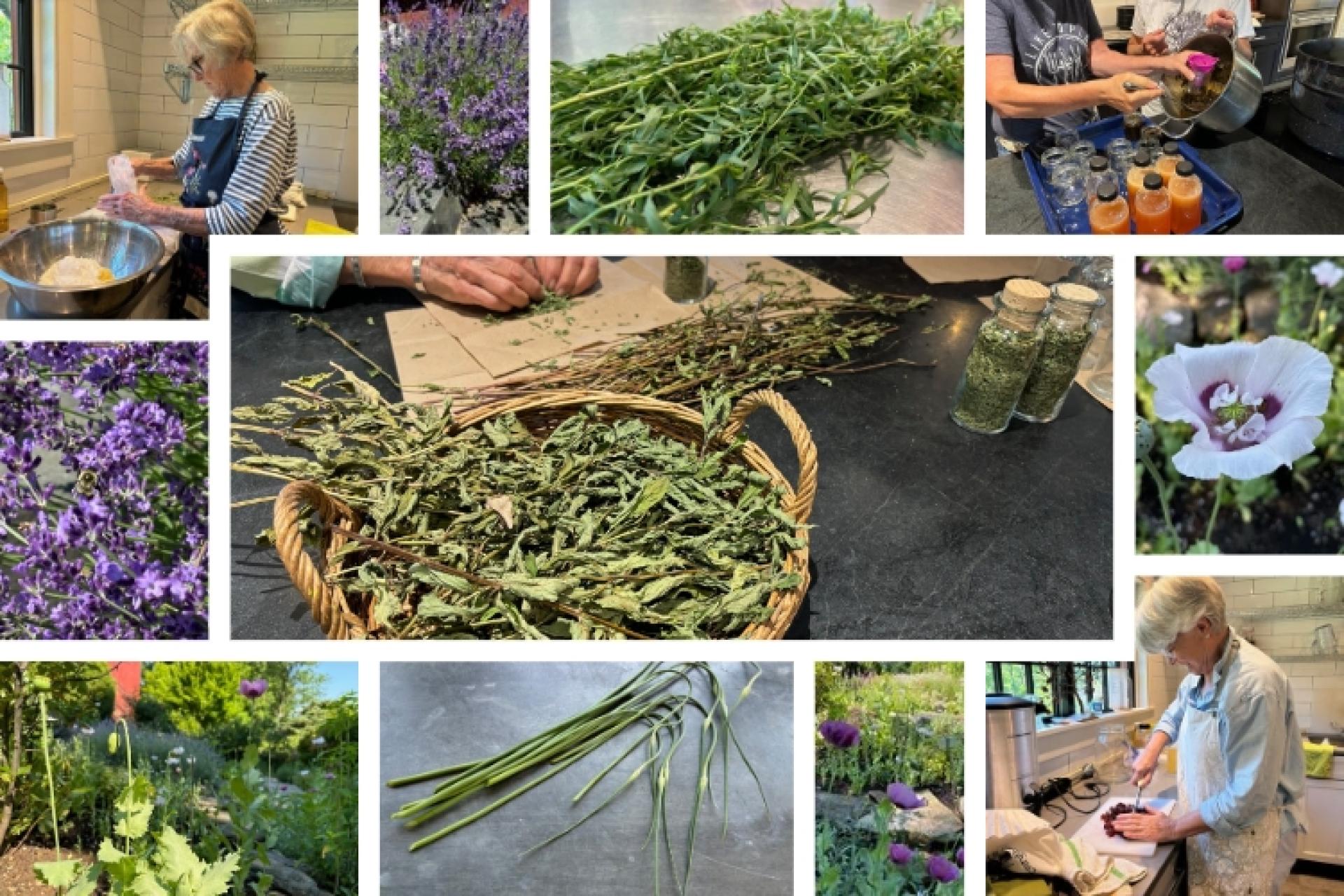You are here
What Is Happening in the BBG Herb Gardens and Kitchen This Week (June 25)
What Is Happening in the BBG Herb Gardens and Kitchen This Week (June 25)
By Barbara F. Smith
A welcome break from the sweltering heat of last week made gardening tasks a delight today.
Blooming with gusto in the BBG Herb Display Garden this week is Lavandula angustifolia (commonly known as English Lavender) — “the Queen of Herbs.” Hardy to Zone 5, lavender is native to the mountains of the western Mediterranean. However, if you have the right growing conditions (sandy soil, dry, open, sunlit position) plant lavender with extravagance. Several lavender cultivars have been developed to thrive in regions even colder than ours, for example, Hidcote, Munstead, and Grosso, which are said to be hardy to Zone 4. There are hundreds of named cultivars and dozens of species, with various fragrances and colors (blue, dark purple, mauve, pink, and white).
Lavender’s uses fit nearly every herbal category: fragrance, medicinal, ornamental, and culinary. Its scent appears in soaps, cologne and perfume. In sachets, its perfume freshens closets or drawers containing linens or underclothes. Lavender’s effectiveness as a traditional antibacterial, antifungal and antiseptic agent has been confirmed by numerous clinical studies. Its oils have a long history of medicinal uses to aid such varied ailments as indigestion, headaches, sore throats, and insect bites, as well as in aromatherapy. In the garden, lavender’s spiky blossoms make a lovely edging for walkways, to the delight of bees. Its blossoms can be featured in wreaths or other room decorations.
Writers on herbal topics and home gardeners alike — everyone loves lavender.
The delicate flowers of Papaver somniferum — sometimes called breadseed poppies or opium poppies — are “volunteering” throughout the BBG Herb Display gardens, too. “Innocuous when its seeds are gathered for baking, important in medicine as the source of morphine, and destructive when refined into heroin” summarizes some attributes of this plant.
This poppy is a beautiful, hardy annual, with broad, sharply scalloped blue-grey foliage. The long, slender stems have flowers of paper-thin petals that give way to form beautiful seed heads. Pollinators are attracted to the white, pink, mauve or red flowers. Nutritionally, oil-rich poppy seeds have about the same oil, protein and carbohydrate levels as sesame seeds. Poppy seeds are safe for consumption, and many cuisines utilize the seeds on baked goods or added to cheese.
Breadseed poppies are easily grown from seed in ordinary garden soil and they self-sow readily. Herb Associates volunteers will sprinkle this year’s crop of seeds throughout various beds in the BBG Herb Display Garden, with beautiful results in the next growing season.
The Kitchen Crew was busy as usual, making several special products: “Ford’s Garlic Scape Jam” and “J. Wilson’s Tarragon French Dressing.” Batches of Rhubarb Shrub and of Grape Rosemary Shrub were prepared. Dried peppermint and spearmint leaves were stripped from their stems for bottling as herbal teas. The ever-popular jars of Herb Mustard were labeled and readied to be delivered over to the Visitor’s Center Gift Shop, where all Herb Associates’ products may be purchased.
Thank you for your interest in all things herbal at the Berkshire Botanical Garden.
The Berkshire Botanical Garden’s Herb Associates began in 1957 and have been making and selling products for the benefit of BBG ever since. At BBG, the Herb Associates oversee a display garden and production garden, both located near the Center House. Members/volunteers meet every Tuesday morning during the late spring through mid-autumn each year, coinciding when the gardens themselves are open to the public. Members plant, weed and tend the gardens, as well as harvest and process the variety of herbs.
Help Our Garden Grow!
Your donation helps us to educate and inspire visitors of all ages on the art and science of gardening and the preservation of our environment.
All Donations are 100 percent tax deductible.



